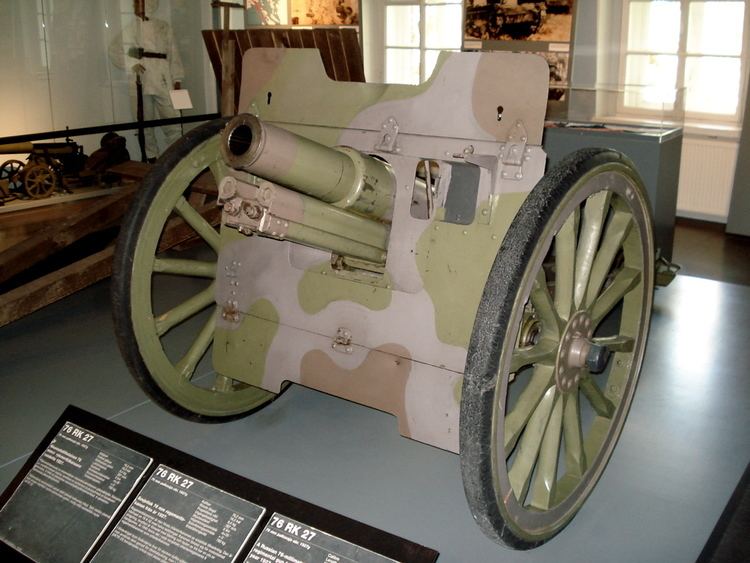Number built 16,482 | Produced 1928-1943 | |
 | ||
Used by | ||
The 76 mm regimental gun M1927 (Russian: 76-мм полковая пушка обр. 1927 г.) was a Soviet infantry support gun. The gun was developed in 1927 by the design bureau of Orudiyno-Arsenalny Trest (OAT) and entered production in 1928. A total of 16,482 pieces were built. On June 22, 1941 the Red Army had 4,708 of these guns. In 1943 the gun was replaced in production by the 76 mm regimental gun M1943, but remained in service until the end of the war. The Germans placed captured guns into service as the 7.62 cm Infanteriekanonehaubitze 290(r) (infantry gun-howitzer), while in the Finnish army they were known as 76 RK/27.
The gun was intended for destruction of light field fortifications and openly placed personnel by direct fire. HEAT shell gave it limited anti-tank capabilities.
The M1927 was issued to rifle and cavalry regiments of the Red Army. Artillery battalion of rifle brigade included one battery of M1927. Some guns were used by anti-tank artillery battalions.
